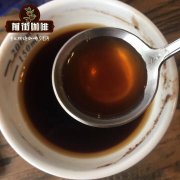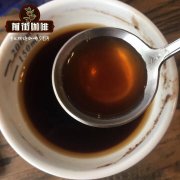What is the method of coffee processing in Rwanda? Introduction of Kinazi Coffee processing Plant in Rwanda

Professional coffee knowledge exchange more coffee bean information please follow the coffee workshop (Wechat official account cafe_style)
Once upon a time, coffee was handled differently from each farm, and beans from different farms would be gathered together and mixed with neighboring ones.
After the genocide, the country began to open up to accept foreign aid, and revitalizing the coffee industry has become the country's top priority. As a result, domestic programs such as PEARL and SPREAD began to appear, providing consistent training for farmers and setting up washing tables to match the traditional coffee treatment in East Africa. Burundi is one of the countries that use this approach and make the most of it.
Another point worth mentioning is Africa's unique Fully washed treatment, which soaks coffee beans twice, which is not common in Latin America.
The most commendable thing about Rwandan coffee is that after the coffee cherries are harvested, farmers pick out the immature green cherries first. The ripe cherries are then separated in the sink, and only the red cherries are sent to the sheller. According to the weather conditions at that time, coffee cherries with remaining pectin will ferment for 24-48 hours. The purpose of fermentation is to avoid damaging the taste of coffee. Then send the clean coffee beans that still have sheepskin to dry. All the coffee will be dried on the net bed for 15-22 days, and the water content will be about 11%. When the weather is too hot, the farmer must cover them with a cloth, so that the drying process will be completed prematurely.
The best Rwandan beans should be white, some drying processes should be completed in time, and there should be no cracks in the beans. In this way, more organic compounds can be retained, and the shelf life can be extended while the taste is good.
The treatment of high-altitude Rwandan coffee beans by full-water washing is generally sweet and thick.
Most Rwandan coffee beans are either Bourbon or Bourbon branches.
The Kinazi Coffee washing Plant and the Simbi Coffee washing Plant are privately owned and run by EdbI COFFEE INVESTMENT Ltd's Abdul Rudahunga, who was inspired by his grandmother's entry into the coffee business. She is also a coffee farmer and one of the few rural Rwandans.
The Kinazi Coffee washing Plant opened in 2016 and 2018 is the second quarter of Kinazi's operation. He scored 87.65 points in the 13th Cup winners' Cup and won 28 awards from 150 contestants across the country.
The facility is a cherry processing facility of 350 tons per quarter and a pulping machine of 2.8 tons per hour. After freshly delivered cherries are pulped, the coffee is wet fermented and the beans are sorted by density using a water-filled grading channel. Dry the wet parchment under cover for 24 hours, then move it to an uncovered drying bed for an average of 15 days.
During this period, coffee was constantly sorted by a group of brightly dressed women who meticulously removed defective beans. Kinazi Coffee has begun to grow coffee in nurseries to help farmers who have the incentive to grow coffee. These coffee trees are distributed free of charge.
The Kinazi coffee washing plant uses wet fermentation and uses graded channels and water for density separation. They then transport the wet parchment for 24 hours for cover drying, and then move the parchment to an uncovered drying bed for an average of 15 days.
Altitude: 1615 m Coffee planting altitude: 1615-1750 m
Region: Huye
Industry: Kinazi
Cell:Kabona
Status: private
Type of coffee: Arabica Bourbon
Average value of soil Ph: 5.1
Precipitation range: 1100 to 1200 mm
Temperature range: 17-27 degrees Celsius
CWS owner: Simbi Coffe Investment Ltd
Processing capacity: 350 tons of cherries
Fermentation method: drying treatment
Drying table: 65 tables, completely sun-dried
Storage: a warehouse with natural ventilation and wood pallets
Road traffic is convenient: good
Water source: mountain natural spring source
Energy: generators and solar energy
Environmental protection measures: natural leakage
How to bake Rwandan coffee?
Because of the altitude of Rwandan coffee, its density is high. Qianjie Coffee uses a lot of calories in the roasting process when baking boutique African coffee. Hard beans like this can transfer heat well, so a higher lower bean temperature and a higher heating rate will be better.
At the same time, the alcohol thickness of Rwandan coffee is very good, so you can also try to extend the flavor development period Development time and burst period to emphasize alcohol thickness. Lightly roasted Rwandan coffee is sour and pleasant, but don't be afraid to create more syrup-like thickness / taste in the coffee.
Qianjie Coffee recommends that Rwandan coffee be brewed in 89-91 degrees water, with a "grassy aroma" and a tropical climate. In addition to the sweetness of fruit, this coffee can also give people a feeling of freshness, clearness and freshness. Bourbon coffee grown in Rwanda is amazing for its sweet fruit, full-bodied, unrestrained and lingering aftertaste. This coffee has a delicious, citrus sweetness and a deep chocolate color, with red apples, cherries, cinnamon and honey, high sweetness and balance, cinnamon, almonds and chocolate finish.
Qianjie coffee: Guangzhou bakery, the store is small but a variety of beans, you can find a variety of unknown beans, but also provide online store services. Https://shop104210103.taobao.com
Important Notice :
前街咖啡 FrontStreet Coffee has moved to new addredd:
FrontStreet Coffee Address: 315,Donghua East Road,GuangZhou
Tel:020 38364473
- Prev

Characteristics of hand-flavored flavor of coffee beans in Rwanda Murundo CWS processing plant
Professional coffee knowledge exchange more coffee bean information Please follow the coffee workshop (Wechat official account cafe_style) Rwanda has always been given good coffee growing conditions: high altitude, volcanic soil, rich sunshine and Cabernet Sauvignon. Rwanda is also known as the land of thousands of mountains because many coffee trees are planted on mountains between 1700 and 2000 meters above sea level. Rwanda Coffee
- Next

What are the characteristics of Congolese coffee? does the Congolese Veronga Coffee Company recommend Congolese coffee?
Professional coffee knowledge exchange more coffee bean information please follow the coffee workshop (Wechat official account cafe_style) mention Africa, people's first impressions are: desert, drought, tribe, poverty, mystery and so on. Because of its climatic environment, it has become a paradise for the growth of coffee trees. The world's first coffee tree was found in the Horn of Africa. Local indigenous tribes often use coffee
Related
- Detailed explanation of Jadeite planting Land in Panamanian Jadeite Manor introduction to the grading system of Jadeite competitive bidding, Red bid, Green bid and Rose Summer
- Story of Coffee planting in Brenka region of Costa Rica Stonehenge Manor anaerobic heavy honey treatment of flavor mouth
- What's on the barrel of Blue Mountain Coffee beans?
- Can American coffee also pull flowers? How to use hot American style to pull out a good-looking pattern?
- Can you make a cold extract with coffee beans? What is the right proportion for cold-extracted coffee formula?
- Indonesian PWN Gold Mandrine Coffee Origin Features Flavor How to Chong? Mandolin coffee is American.
- A brief introduction to the flavor characteristics of Brazilian yellow bourbon coffee beans
- What is the effect of different water quality on the flavor of cold-extracted coffee? What kind of water is best for brewing coffee?
- Why do you think of Rose Summer whenever you mention Panamanian coffee?
- Introduction to the characteristics of authentic blue mountain coffee bean producing areas? What is the CIB Coffee Authority in Jamaica?

